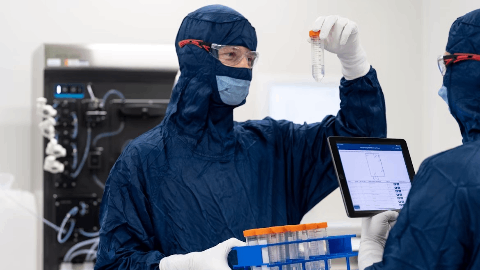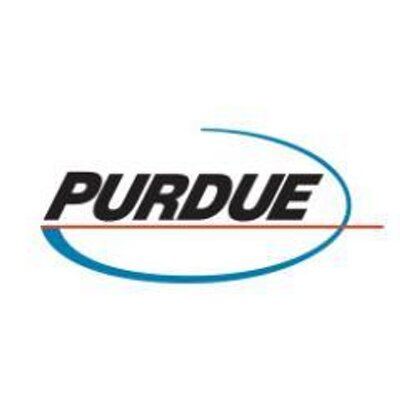预约演示
更新于:2025-12-27
API-001
更新于:2025-12-27
概要
基本信息
最高研发阶段临床2期 |
首次获批日期- |
最高研发阶段(中国)- |
特殊审评- |
登录后查看时间轴
结构/序列
分子式C20H24ClN3O2 |
InChIKeySHRYQZBTQDMGLZ-UHFFFAOYSA-N |
CAS号1265917-14-3 |
关联
6
项与 API-001 相关的临床试验NCT06574360
Dual Modulation of Sigma-1 and NMDA Receptors in the Treatment of Schizophrenia
sigma-1 receptor (S1R) agonistic property have been tested in clinical trials for the treatment of schizophrenia. In addition, previous studies found that some NMDA receptor (NMDAR)-enhancing agents were able to improve clinical symptoms of patients with chronic schizophrenia. Whether combined treatment of an S1R agonist and an NMDA-enhancing agent can be better than an S1R agonist alone deserves study.
开始日期2024-09-23 |
申办/合作机构 |
EUCTR2012-000399-41-ES
An exploratory, randomized, double blind, placebo controlled, parallel groups Phase II clinical trial to evaluate the efficacy and safety of E-52862 (400 mg) by oral route, in patients with postherpetic neuralgia (PHN).
开始日期2012-07-23 |
申办/合作机构- |
EUCTR2012-000398-21-ES
A proof-of-concept phase 2, randomized, placebo-controlled, double blind, multicentre clinical trial in 2 parallel groups to evaluate the efficacy and safety of E-52862 for reducing the incidence and severity of oxaliplatin-induced peripheral neuropathy in patients treated for colorectal cancer.
开始日期2012-06-21 |
申办/合作机构 |
100 项与 API-001 相关的临床结果
登录后查看更多信息
100 项与 API-001 相关的转化医学
登录后查看更多信息
100 项与 API-001 相关的专利(医药)
登录后查看更多信息
62
项与 API-001 相关的文献(医药)2025-08-01·BIOMEDICINE & PHARMACOTHERAPY
Sigma-1 receptor antagonism as a promising strategy for postoperative pain treatment: A study in laparotomized mice
Article
作者: Puerto-Moya, Amada ; Cobos, Enrique J ; Hasoun, Makeya A ; Cronin, Shane J F ; Ruiz-Cantero, M Carmen ; Huerta, Miguel Á ; González-Cano, Rafael ; Mayr, Hannah K ; Robles-Funes, María ; Santos-Caballero, Miriam
Postoperative pain remains a major clinical challenge, as it often persists despite analgesic treatment even with opioids. We studied the effects of sigma-1 receptor antagonists (BD-1063 and S1RA), administered alone or in combination with the µ-opioid morphine, on three key aspects of postoperative pain in mice with a transverse laparotomy: tactile allodynia, pain at rest, and movement-induced pain. Sigma-1 antagonism and morphine induced antiallodynic effects sensitive to peripheral opioid antagonism by naloxone methiodide, although only sigma-1 antagonism was sensitive to the sigma-1 agonist PRE-084. The antiallodynic effect of sigma-1 antagonism was also reversed by the μ-opioid antagonist cyprodime and by depletion of neutrophils, which express high levels of proopiomelanocortin, the precursor of the µ-opioid agonist ß-endorphin. Morphine, but not sigma-1 antagonism, reversed pain at rest, and none of the drugs tested improved movement-induced pain. Notably, the combination of S1RA and morphine at doses ineffective when administered alone, fully reversed tactile allodynia, pain at rest, and movement-induced pain, and in a manner sensitive to PRE-084 and naloxone methiodide, indicating the simultaneous participation of both sigma-1 and peripheral opioid receptors. Therefore, sigma-1 antagonism boosts the actions of endogenous opioid peptides from neutrophils only to reverse tactile allodynia, but when combined with morphine, it enhances peripheral opioid analgesia to reverse all aspects of postoperative pain. Finally, S1RA did not enhance morphine-induced inhibition of gastrointestinal transit or rewarding effects. Modulation of opioid analgesia by sigma-1 receptors might have potential clinical application to increase the therapeutic range of opioids in the treatment of postoperative pain.
2025-01-01·BIOMEDICINE & PHARMACOTHERAPY
Ligand docking in the sigma-1 receptor compared to the sigma-1 receptor-BiP complex and the effects of agonists and antagonists on C. elegans lifespans
Article
作者: Tencomnao, Tewin ; Brimson, James Michael ; Prasanth, Mani Iyer ; Verma, Kanika
Model organisms are commonly used to study human diseases; we set out to understand the relevance of several model organisms with relation to the σ1R protein. The study explored the interactions of σ1R with various agonists, antagonists across different species. Ligand and protein-protein (σ1R-BiP) docking approaches were used to understand the significance of σ1R in modulating neuroprotective mechanisms and its potential role in Alzheimer's. Ligand docking revealed that common σ1R antagonists generally exhibited stronger σ1R binding than commonly used agonists. Human σ1R showed high binding affinity for S1RA and NE100. Orthologs in yeast, slime mold, and C. elegans displayed varied binding affinities, indicating evolutionary adaptation in their binding pockets. We evaluated the relevance of σ1R-ligand interactions in C. elegans, measuring life-spans showing the impact of ligands on lifespan depends on genetic background and amyloid-beta pathology. Haloperidol (5-10 mM) extended wild-type worms' lifespan, but this effect was absent in the σ1R-KO, suggesting at least a partial role for the σ1R. Fluoxetine (5-10 mM) also promoted a small increase in longevity in wild-type worms but was not seen in the σ1R-KO strain. BD1047 (5 & 10 mM) reduced the lifespan of amyloid-beta-expressing transgenic worms, whereas dipentylamine (DPA) (5 mM) significantly increased the lifespan in a σ1R antagonist-sensitive manner. These findings highlight the importance of the σ1R in neurodegeneration and suggest that ligand interactions are modulated by BiP. Further research using in-vitro and in-vivo models is needed to clarify σ1R's therapeutic potential in neurodegenerative diseases, where modulating σ1R could provide neuroprotective effects.
2024-07-01·DRUG AND ALCOHOL DEPENDENCE
Ethanol drinking at adulthood is sensitive to S1-R antagonism and is promoted by binge ethanol self-administration at adolescence
Article
作者: Pautassi, Ricardo Marcos ; Marengo, Leonardo ; Salguero, Agustín ; Morón, Ignacio ; Ruiz-Leyva, Leandro ; Cendán, Cruz Miguel
BACKGROUND:
Binge drinking at adolescence is a risk factor for problematic alcohol (ethanol) consumption later in life, yet the murine studies that modelled this phenomenon via ethanol self-administration have provided mixed findings. Antagonism of the sigma-1 receptor (S1-R) system at adolescence modulates ethanol's motivational effects and intake. It is still unknown, however, whether this antagonism would protect against enhanced ethanol intake at adulthood after adolescent binge ethanol exposure.
METHODS:
Exp. 1 and 2 tested adults male or female Wistar rats -exposed or not to ethanol self-administration at adolescence (postnatal days 31-49; nine 2-hour sessions of access to 8-10% ethanol)- for ethanol intake using 24-h two-bottle choice test (Exp. 1) or time restricted, single-bottle, tests (Exp. 2). Experiments 2-5 evaluated, in adolescent or adult rats, the effects of the S1-R antagonist S1RA on ethanol intake and on ethanol-induced conditioned taste or place aversion. Ancillary tests (e.g., novel object recognition, ethanol-induced locomotor activity) were also conducted.
RESULTS:
Adolescent ethanol exposure promoted ethanol consumption at both the restricted, single-bottle, and at the two-bottle choice tests conducted at adulthood. S1RA administration reduced ethanol intake at adulthood and facilitated the development of ethanol-induced taste (but not place) aversion.
CONCLUSIONS:
S1RA holds promise for lessening ethanol intake after chronic and substantial ethanol exposure in adolescence that results in heightened ethanol exposure at adulthood. This putative protective effect of S1-R antagonism may relate to S1RA exacerbating the aversive effects of this drug.
2
项与 API-001 相关的新闻(医药)2025-08-25
Aug. 22, 2025 -- Jyong Biotech Ltd. (Nasdaq: MENS) (the “Company”, “Jyong Biotech”), a science-driven biotechnology company based in Taiwan committed to developing and commercializing innovative and differentiated new drugs (plant-derived) mainly specializing in the treatment of urinary system diseases, with an initial focus on the markets of the U.S., the EU and Asia, announced its participation in the 22nd Urological Association of Asia Congress which was held in conjunction with the 47th Annual Meeting of the Taiwan Urological Association on August 14–17, 2025, and exhibited topline results from the multiple clinical studies of its proprietary drug candidates BOTRESO® for benign prostatic hyperplasia (BPH) and lower urinary tract symptoms (LUTS), and MCS‑8 (PCP) for the potential prevention of prostate cancer.
The Phase III clinical trials of BOTRESO® consisted of two pivotal studies (BOTRESO® vs. placebo) and two open-label extension studies (all participants received BOTRESO®). The two pivotal studies lasted 12 weeks and were designed to evaluate the clinical efficacy of BOTRESO® compared to placebo—specifically to determine whether the difference between groups reached statistical significance. The open-label extension studies, in which no placebo group was included and all participants took BOTRESO®, assessed the long-term safety of the drug for up to 52 weeks (1 year). The results showed that in the Intention-to-Treat (ITT) population(includes all patients who took at least one dose of the investigational drug, whether BOTRESO® or placebo), there was no significant difference between groups in the U.S. subgroup. However, in the Asian subgroup (Taiwan) and the pooled Taiwan-U.S. population, the BOTRESO® group showed a statistically significant improvement in lower urinary tract symptoms compared to placebo. Moreover, in the 52-week open-label extension studies, BOTRESO® consistently showed long-term improvement from baseline. Importantly, the incidence of adverse events did not increase in the BOTRESO® group, and no serious adverse events related to BOTRESO® were reported.
Current pharmacologic treatments for BPH, such as α‑blockers and 5‑α‑reductase inhibitors, have been associated in published literature (The Journal of Urology, February 2021) with increased risk of heart failure, and the Safety Announcement from U.S. FDA (June 9, 2011) has noted a potential increased risk of high‑grade prostate cancer with 5‑ARIs. However, BOTRESO® indicated excellent improvement and tolerance in the four Phase III clinical trials.
BOTRESO® is locally developed in Taiwan, and this is the first case that a Taiwanese-developed oral botanical drug has been approved IND (Investigational New Drug) number from the U.S. FDA to proceed to Phase III clinical trials. The Company has developed additional drug substance (API-2) under the same patent of API-1, and is collecting all the related CMC documents per U.S. FDA requirements. Jyong Biotech intends to integrate Taiwan‑U.S. clinical data for the NDA (New Drug Application) submission to the U.S. FDA.
In 2020, the U.S. BPH patient population reached approximately 4.7 million, an increase of about 6.8% from 2017. Globally, the number of BPH patients grew from 88.4 million in 2017 to 94.2 million in 2020 (up 6.5%). The global BPH drug market expanded from $3.7 billion in 2017 to $4.1 billion in 2020 and is projected to reach $9.8 billion by 2026.
For MCS‑8 (PCP), the Phase II trial met its primary efficacy analysis. Compared with placebo, 104 weeks of administration was associated with lower rates of positive prostate biopsies and high‑grade prostate cancer. No MCS-8 (PCP) treatment‑related serious adverse events were observed. The Company believes that these findings provide a basis for advancing MCS‑8 into Phase III evaluation, subject to regulatory guidance.
Because of the safety concerns of current chemical drugs, the doctors recommended the Company to conduct MCS-8 clinical study. The Company is also in discussions with global pharmaceutical partners regarding the further development of MCS‑8, with the goal of initiating large‑scale Phase III trials involving thousands to tens of thousands of participants to further evaluate its preventive potential.
All clinical research has been conducted in accordance with U.S. FDA guidance, Jyong Biotech maintains global patent coverage for BOTRESO® across Asia, the Americas, and the European Union. The Company has signed multiple letters of intent and licensing agreements with international pharmaceutical partners, executed its first licensing and continues to pursue collaborations and royalty-bearing partnerships to support global market entry.
Headquartered in Taiwan, Jyong Biotech Ltd. is a science-driven biotechnology company committed to developing and commercializing innovative and differentiated new drugs (plant-derived), mainly specializing in the treatment of urinary system diseases, with an initial focus on the markets of the U.S., the EU and Asia. Since its inception in 2002, the Company has built integrated capabilities that encompass all key functionalities of drug development, including early-stage drug discovery and development, clinical trials, regulatory affairs, manufacturing, and commercialization. Leveraging strong research and development capabilities and a proprietary platform, the Company has been developing a series of botanical drug candidates, including its primary botanical drug candidate, BOTRESO®, another clinical-stage botanical drug candidate, and other preclinical-stage botanical drug candidates. The Company endeavors to develop and supply first-class innovative drugs to meet customers’ health needs and seeks to be a valuable business organization that is held in high esteem by the public.
The content above comes from the network. if any infringement, please contact us to modify.

临床结果申请上市引进/卖出
2015-01-12
January 12, 2015
By
Krystle Vermes
, BioSpace.com Breaking News Staff
Mundipharma Laboratories GmbH
and
Purdue Pharmaceuticals
announced today that they have entered a collaboration agreement with
Laboratorios Esteve
. The goal of the deal is to bring next generation products in pain management to marketing. Under the agreement,
Mundipharma
and
Purdue
could potentially pay
Esteve
up to $1 billion, assuming development, regulatory and sales milestones are met.
“We are very excited about the opportunity to work with
Esteve
and the prospects for growth the partnership will bring,” said
Antony Mattessich
, managing director of
Mundipharma International
. “This strategic collaboration leverages the companies’ individual strengths, with our ability to bring products from the clinical process through to successful commercialisation complementing
Esteve
’s focus on discovering new molecules and approaches to the treatment of pain in the laboratory.
Mundipharma
,
Purdue
and
Esteve
are committed to driving innovation in the pain management space, so the collaboration is a natural fit.”
One of the assets covered by the collaboration is E-52862, a first-in-class chemical entity that targets the sigma-1 receptor pathways. It is currently in Phase II trials that cover several neuropathic pain indications.
“By combining
Esteve
’s,
Mundipharma
’s and
Purdue
’s complementary strengths and capabilities, we are creating opportunities to improve pain treatment options for patients and reaffirming our ongoing commitment to pain management,” said
Albert Esteve
, chief executive officer of
Esteve
. “With our pain pipeline and
Mundipharma
’s and
Purdue
’s development, market access and commercialisation strengths, we are well-placed to work together to bring innovative new treatments to patients suffering from pain.”
A Closer Look at E-52862
In September 2012,
Esteve
announced the
results
of a Phase I trial that looked at E-52862 for the treatment of neuropathic pain. The results were published in the
British Journal of Clinical Pharmacology
, and the drug showed good overall safety, tolerability, pharmacodynamics and pharmacokinetics.
“Because of the MoU and the overall data available at present, we are evaluating the E-52862 in four different types of neuropathic pain and also in the pain in patients receiving opioid, to study the increased analgesic effect of improving these and tolerability,” Program Director
Roser Vives
said at the time. “The E-52862 also has potential applications for other neurological and psychiatric indications.”
The Phase I study incorporated more than 300 patients. Experiments confirmed that the drug is suitable for administration orally, once per day, in humans.
临床1期临床2期临床结果
100 项与 API-001 相关的药物交易
登录后查看更多信息
研发状态
10 条进展最快的记录, 后查看更多信息
登录
| 适应症 | 最高研发状态 | 国家/地区 | 公司 | 日期 |
|---|---|---|---|---|
| 神经痛 | 临床2期 | 西班牙 | 2022-01-30 | |
| 新型冠状病毒感染 | 临床2期 | 西班牙 | 2020-10-16 | |
| 疱疹后神经痛 | 临床2期 | 西班牙 | 2012-07-17 | |
| 糖尿病性神经病变 | 临床2期 | 西班牙 | 2012-06-13 |
登录后查看更多信息
临床结果
临床结果
适应症
分期
评价
查看全部结果
| 研究 | 分期 | 人群特征 | 评价人数 | 分组 | 结果 | 评价 | 发布日期 |
|---|
No Data | |||||||
登录后查看更多信息
转化医学
使用我们的转化医学数据加速您的研究。
登录
或

药物交易
使用我们的药物交易数据加速您的研究。
登录
或

核心专利
使用我们的核心专利数据促进您的研究。
登录
或

临床分析
紧跟全球注册中心的最新临床试验。
登录
或

批准
利用最新的监管批准信息加速您的研究。
登录
或

特殊审评
只需点击几下即可了解关键药物信息。
登录
或

生物医药百科问答
全新生物医药AI Agent 覆盖科研全链路,让突破性发现快人一步
立即开始免费试用!
智慧芽新药情报库是智慧芽专为生命科学人士构建的基于AI的创新药情报平台,助您全方位提升您的研发与决策效率。
立即开始数据试用!
智慧芽新药库数据也通过智慧芽数据服务平台,以API或者数据包形式对外开放,助您更加充分利用智慧芽新药情报信息。
生物序列数据库
生物药研发创新
免费使用
化学结构数据库
小分子化药研发创新
免费使用



